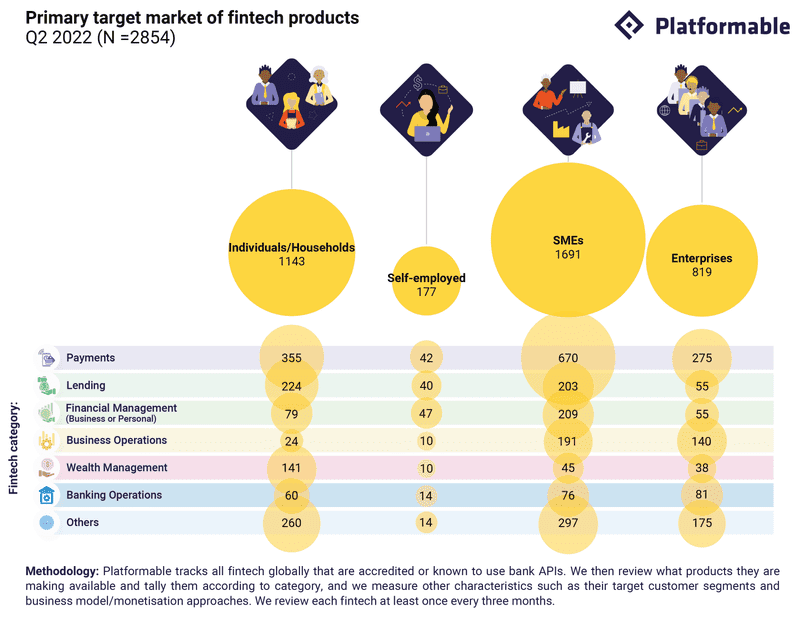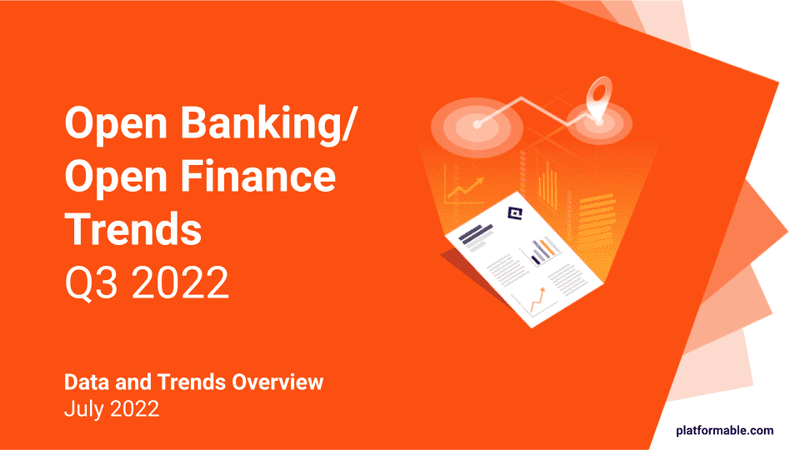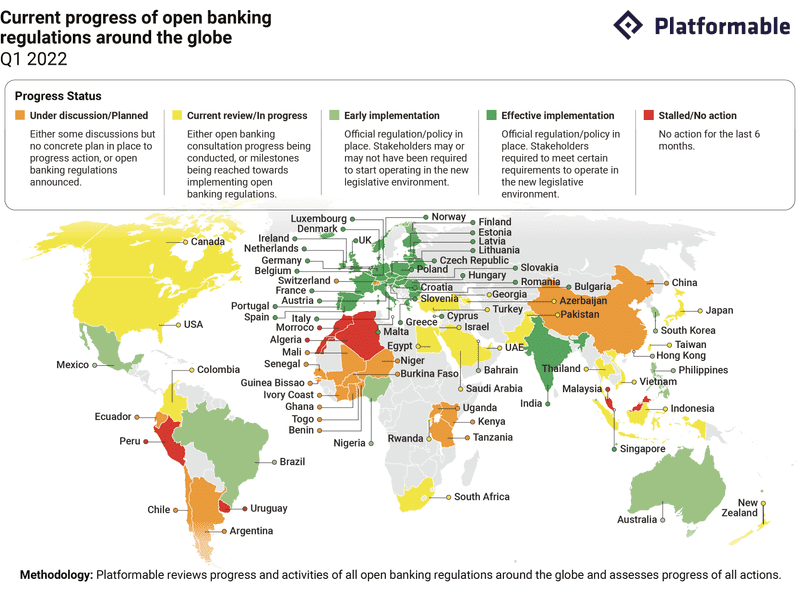Q4 2020 Open Banking API Trends: Consumers
6 min read

Benefits to individuals/households
27% of fintech using open banking APIs focus on the needs of private consumers, that is, individuals and households.
We group all private consumers together as “individuals/households” following the broad category level defined in Consumer Priorities for Open Banking by Reynolds & Chidley, et al.
Examples of emerging fintech products targeting individual/household consumers
Benefits to small and medium enterprise (SMEs) consumers
The majority (66%) of fintech created using open banking APIs target small and medium enterprises.
At Platformable, we use the European Commission’s definitions of micro business, small, and medium-sized enterprises, and large enterprises. We also classify sole traders separately.
Examples of emerging fintech products targeting small and medium enterprises (SMEs)
Indirect beneficiaries
Our research in 2020 also helped us clarify three indirect beneficiaries that are receiving (or should receive value) from open banking and open finance. These are modeled on triple bottom line economic reporting and corporate and community sustainability reporting models.
Open banking and open finance open ecosystems should indirectly benefit:

- Society: By generating new tax revenue from market participants, and creating more dynamic engagements between citizens and the services they use with less friction

- Local economies: Open ecosystems should overcome the extractive value risks of larger platform models in which local economies are mined for data but receive no benefits. Open ecosystems should enable new employment, local taxes and other revenue generation, and enable participants to be rewarded for their participation and data sharing

- Environment: Open banking and open finance ecosystems should be sustainable and use limited resources within responsible limits. Growth is not considered a metric in itself, as it does not acknowledge that open ecosystems must work within limited available physical and energy resource constraints. The carbon footprint of all ecosystem participants would be one desirable measure but in the short-term measures may include propensity for a stakeholder to address sustainable usage. For example, Stripe, (an open finance API provider that also integrates open banking APIs) has introduced a climate crisis fund, and apps like Enfuce are using open banking APIs to create fintech products that calculate the carbon footprint of consumer purchases.
Why this is important to measure
Measuring the impact and value generated from open banking and open finance for indirect beneficiaries can help key personas advocate for a more open ecosystem.


















